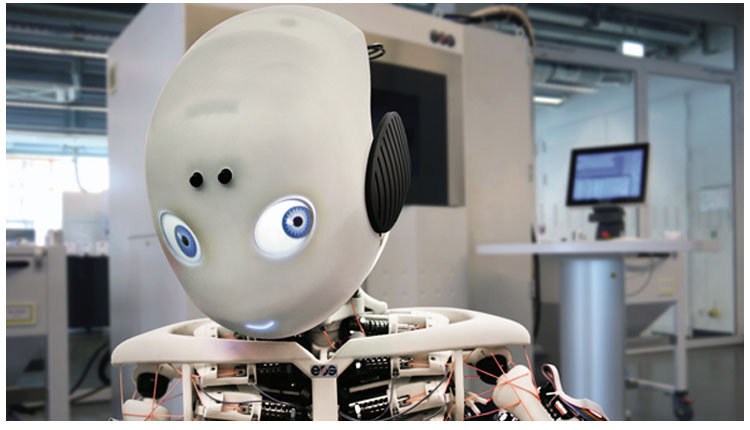EOS, the global technology and quality leader for high-end Additive Manufacturing (AM) solutions, has announced its support of the Swiss society Devanthro and the Roboy project at the Technical University of Munich. The goal of the Roboy project is to advance humanoid robotics to the capability of human bodies. The vision is to iteratively improve Roboy models until the performance is comparable to humans in dexterity, robustness and flexibility.
The first prototype – Roboy Junior – has muscles and tendons rather than motors in the joints. It has been developed under substantial usage of AM: The complete skeletal body structure of Roboy, which encases his bones and muscles, has been built with EOS systems for Plastic Additive Manufacturing. The use of Industrial 3D Printing has several key advantages; among them is the possibility of building complex functional geometries as well as sustaining a fast and iterative hardware development.
Additive Manufacturing allows for highly complex structures which are also extremely light and stable. It provides a high degree of design freedom, optimization and integration of functional features, and the manufacture of small batch sizes at economical unit costs. The Roboy development benefits from all these advantages: Building complex functional geometries without classical fabrication constraints allows the Roboy team to implement functionality directly into the geometrical parts.
Due to Roboy’s maximal mechatronic complexity on a minimal space, it is not possible to validate some project requirements in simulation. Therefore, the development team needs to be able to test the robot itself. AM is key to this because it allows the fast manufacturing of individual components and the modularization and parameterization of the robot’s construction, enabling an iterative hardware development.
Rafael Hostettler, Roboy project leader, comments: “In software development, rapid development cycles allow software improvement by testing it ‘in the wild’. Additive Manufacturing allows us to apply this approach to robotics, enabling a rapid development to find optimal functional parts in a fraction of the time.” He continues: “EOS’ AM technology is a key component for doing this as it enables the iterative hardware development that is crucial for our project.”

